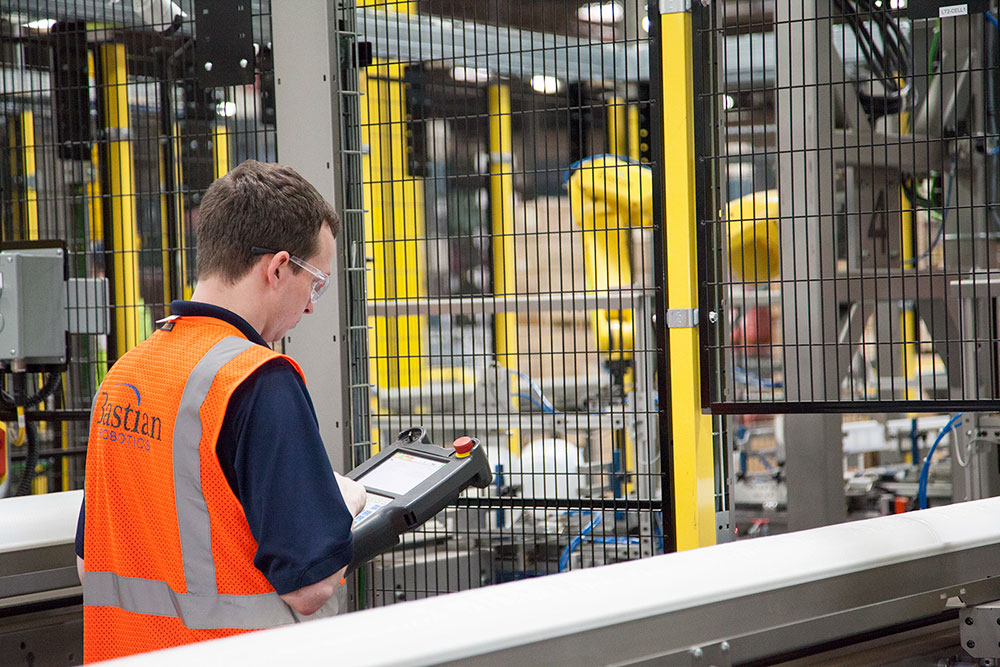
Hypercare: Guidance from Operational Go Live to Project Closure
Drew Bruno | 21 December 2022
Deciding when and where to automate your warehouse facility is an important first step of a successful project, followed by designing and selecting your automation technologies. Once a design is in place, it’s time for the execution team to make it all happen. A crucial phase of execution that should not be overlooked is planning appropriate hand-off of the installed and integrated solution to the customer. A poor hand-off can hamper system potential and lead to both immediate and long term challenges. That said, hypercare support, although common among the industry, looks different for each customer.
In material handling automation integration, hypercare is the service of providing intense system support between the time of go live and project closure. This period is especially critical as the reigns of the system, so to speak, are handed off from the provider to the customer. Having a dedicated team of experts onsite or on-call to quickly address problems helps customers maintain timelines and meet their return on investment.
Material handling equipment, system functionality and ramp up period are just a few of the factors that impact what the hypercare phase looks like. Working with your integrator to set expectations will help lead to a smoother transition.
Set Expectations
Topics for discussion of expectations should include:
- What is the ramp-up plan after initial Go Live?
- How long is hypercare expected to last?
- How many shifts are expected to be supported each day?
- What are the responsibilities of all internal and external parties?
- Are there enough resources to support these expectations?
- What is the escalation plan and protocol during hypercare?
- What is the plan to transition from hypercare to long-term support?
Clarify Priorities
Even though any automation solution should be thoroughly tested and validated before installed to reduce on-site issues, problems can still occur as the system goes live. The nature of hypercare is fluid and reactive, allowing the team to adapt to critical issues as they arise.
Daily prioritization lists of either software or system automation issues should be maintained with serious concerns at the top and problems that can be worked around, like low-impact bugs and software enhancements, toward the bottom. The most important goal is to maintain operations then work on fixing the system.
That’s not to say bug fixes and small enhancements shouldn’t be a priority to a hypercare team. A punch list of defects and associated timeline goals can be formed and worked through in sprints. Similarly, a wish list of enhancements, like the addition of cycle counting functions at a GTP (goods to person) workstation, can be implemented after the system has stabilized.
Communication of priorities and alignment between the customer and support team is essential to effective support.
Develop Customer Champions
An essential role of the hypercare team is to develop and support customer champions – an employee or team of employees who will take ownership of the system after acceptance. These employees should be identified long before hypercare begins and complete technical training provided by the integrator to get a base understanding of the system.
During the hypersensitive support phase, customer champions will troubleshoot alongside the hypercare group, working together to determine the root cause and fixing the issue. Through these efforts, customer champions learn how to effectively maintain the system themselves.
Support from Start to Finish
In customer service, continuity is extremely important. Support should be frictionless and consistent, especially during critical times of transitioning the project from one phase to another – like from software development to onsite integration testing. Seamless support throughout automation selection and integration helps customers meet deadlines, reach goals and improve operations.
The benefit of sourcing a material handling system from an experienced independent integrator like Bastian Solutions is the entire project is supported in-house. Our experts have been involved every step of the way – from consultation to design, manufacturing, installation and support, and have intimate knowledge of the various aspects of your system and can provide pertinent guidance.
Looking for a partner that can help guide you through the complex process of automating your operations? Our software and systems experts are ready to work with you to find the right technology and support solutions.
Drew Bruno is a Logistics Consultant at Bastian Solutions software division. He earned his B.S. in Industrial Engineering at Penn State University. Drew previously served Bastian Solutions as a Software Project Manager, executing numerous projects with highly automated material handling systems. More recently, Drew supports the design and consulting phase with a focus on Bastian Solutions' Exacta software suite.
Comments
No comments have been posted to this Blog Post
Leave a Reply
Your email address will not be published.
Comment
Thank you for your comment.